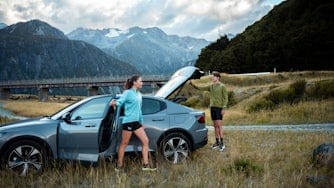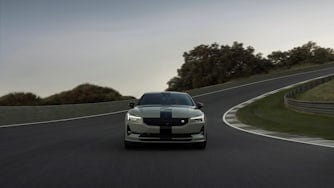The developer perspective: Video Player
Time enjoyed is not time wasted.

Emulators see use during mobile development too, but it’s completely different with vehicles. A good emulator is key.
One argument against mainstream EV adoption is the amount of time it takes to charge. And while it’s true that it takes longer to charge than to fill up (depending on the charging method and other factors), that additional time can be put to good use. Like to take a break, grab some coffee, or stream video content, for instance.
Video Player is a streaming app that allows Polestar 2 occupants to watch content from a growing number of providers in multiple countries. It’s also one of the first apps developed in-house at Polestar specifically for Polestar 2.
“I’m pretty pleased with the reception (Video Player) has had,” says Polestar developer Oskar Björkström. “I feel like it’s accomplished what it’s set out to do, which is to show people the possibilities of the system and to get them talking.”
Coming from an Android development background, Björkström claims that similarities abound between developing apps for mobile devices and for vehicles. Especially with apps like Video Player, which only works when the car is at a standstill, for obvious reasons. “If you don’t opt in to have the app run while driving, the system will block the UI when driver optimisations are required,” he explains. “Therefore, safety is automatically covered. Then it’s extremely similar to ordinary Android development.”
He also praises the Polestar emulator, emphasizing its usefulness when developing apps for an entirely different type of mobile device. “When you do mobile development, you can deploy to a device and get the real experience,” he states. “Emulators see use during mobile development too, but it’s completely different with vehicles. A good emulator is key.”

Another key component of vehicle apps are the templates. Provided by Google, these templates cover the most important and complicated elements that come with in-car deployment. But with some apps, like a certain streaming app, there are no templates. This is where developing and distributing Video Player as an OEM app, with Polestar developers filling in the gaps, saves the day.
Above all, Björkström stresses that it’s less complicated than it may seem to make the leap from mobile apps to vehicle apps, though he acknowledges that it’s not without a few speed bumps. “It’s a well-known system in terms of development and distribution,” he says of the Android Automotive OS of Polestar 2. “Sometimes though, you hit a wall and you’re reminded that it’s a car. It’s not a device that you can just throw around.”
“Some people may be concerned about how they’re going to handle vehicle UI while driving and things like that,” he continues. “But if the app isn’t supposed to do that, it’s very simple. You don’t need to be fully educated in the automotive app stuff if there are things you want to do. Google is releasing more templates, but we can also help. You know, fill in the gaps.”


